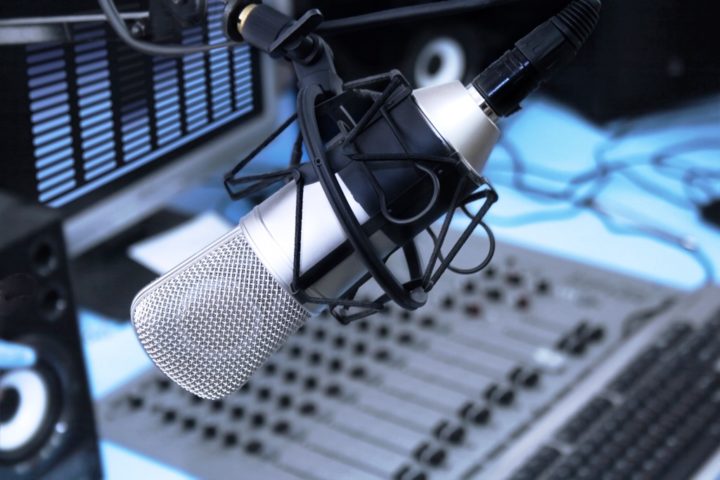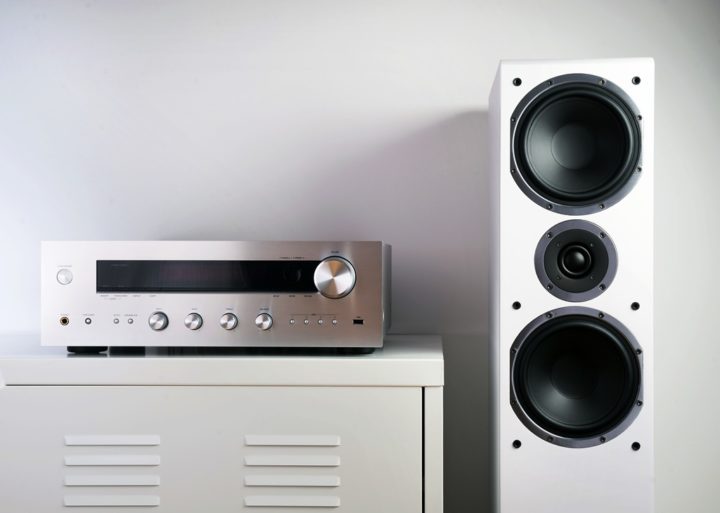Sound is everywhere. It has varying degrees of loudness, texture, range, and frequency, describing its overall quality. While you may have music or sound instinct, it’s crucial to measure sound quality objectively, which can be done by using audio analyzers, especially when creating audio-related products, like microphones, amplifiers, and loudspeakers. Also, the audio analysis applies before any audio performance, such as concerts and conferences, to minimize noise and distortion, ensuring high-quality sound.
But what are audio analyzers and their uses and applications? And, how does an audio analyzer work? Learn more about audio analyzers in this helpful guide.

Definition Of Audio Analyzer
What is an audio analyzer? An audio analyzer, or spectrum analyzer, refers to a piece of equipment that objectively quantifies sound performance (audio spectrum). Some of the parameters used in measuring audio performance include noise, harmonic distortion, crosstalk, and gain.
Audio equipment manufacturers set certain audio device connectivity requirements, requiring tests and validations to ensure superior sound quality. This is exactly what audio analyzers from https://www.ap.com/ do.
Relevance Of Audio Signals To Audio Analysis
Before talking about audio analyzers, it’s important to know what audio signals are and how they work. Understanding general audio levels will help avoid committing common mistakes when connecting different audio devices.
What are audio signals? Audio signals include music, speech, and other types of sounds. The measurement of audio signals is usually expressed in volts and decibels. The normal audio signal level in a professional studio is 1.23 volts (0 decibels or dB equals 0.775 volts).
Different acoustic devices need a specific voltage requirement to stay within a certain range. Otherwise, the device won’t work or will shut down. For example, the range for amplifiers is somewhere between 10.5 to 16.5 volts.
Remember, you can see speakers, amplifiers, and microphones across different devices, such as phones, tablets, musical instruments, and other electronic-acoustic devices. The three audio signal levels relevant to the audio analysis of electro-acoustic devices include the following:
- Speaker level: Speakers need a few electrical audio signal volts to create adequate movement in the speaker. This movement creates a sound wave that the ears can hear. For small speakers, only a few volts are needed. However, large speakers should have 50 to 100 volts to create a loud sound.
- Line level: A line level is 0.5 to 1 volt. An amplifier can amplify the line level (0.5 to 1 volt) up to 10 volts or more. Speakers are connected to amplifiers. You can plug a CD player, radio or tuner, DVD player, or video camera into your HiFi amplifier at home via the ‘Aux IN,’ ‘Aux OUT,’ or ‘Line IN,’ and all of them have electrical audio signals at line level.
The standard white and red leads used in high fidelity or HiFi amplifiers use a line level, producing the cleanest, most dynamic, and highest audio level. However, a common mistake is connecting plugs and sockets because they fit. Never assume the audio level of an acoustic device based on the type of plug being used since you can use the same kind of plug for different audio levels and purposes.
- Microphone level: How much voltage comes out of a microphone when you’re speaking or singing into it? The microphone’s output voltage is very low, measured in milli-volts (1/1000th of a volt).
A microphone can give 1 mV up to 100 mV (depends on how loud a person speaks or sings into it). So, if you plug a microphone directly into the amplifier’s line in, the microphone will produce a shallow muffled sound.
Uses And Applications Of Audio Analyzers
Audio analyzers are beneficial in different fields. This equipment is used by sound engineers, musicians, and other professionals.
Check the following uses and applications of audio analyzers:
- Device testing: An audio analyzer can assess the electronic device’s capability to produce good quality sound. For example, the audio analyzer operator compares a microphone to standard ratings, checking for interference and noise before a major concert.
- Product enhancement: Electronic devices are in-demand nowadays, and consumers only want the best sounds. Product developers improve devices using audio analyzers to produce clean and high sound quality, reducing noise and interference.
- Quality assurance: Electronic-acoustic devices must adhere to industry standards for equipment testing (will be discussed below). For this reason, audio products must comply with individual specifications, which is done with the help of audio analyzers, before releasing them to the market.
Equipment Testing
Some of the electronic-acoustic instruments that benefit from equipment testing include the following:
- Electro-Acoustic Devices: Some examples of these devices include microphones, amplifiers, and speakers. Audio analyzers test these devices for flat frequency production. Quality assurance teams and sound engineers evaluate electro-acoustic devices for frequency response, signal-to-noise ratio, idle channel noise, sensitivity, and distortion.
- CD Players: When analyzing CD audio performance, a software program is used to obtain measurements. The software program automatically runs in a test sequence and produces a result print-out. Audio analyzer evaluates audio frequencies based on noise, distortion, phase, and crosstalk, detecting defective CDs.
- Car Stereo Or Radio: Radio analyzers aim to ensure live broadcasting FM transmissions comply with the standard procedure, reducing interference and noise within acceptable limits. Digital audio analyzers measure parameters, such as noise, distortion, and crosstalk.
On the other hand, analog audio analyzers test various sound environments, considering sound quality in different conditions, such as sound quality while driving and separate car cabins.
- Mobile Devices: Audio analyzers are also used in testing the speaker, earphone circuit, and microphone of smartphones and tablets, paving the way to innovative features, such as wireless earphones, wireless speakers, and bone conduction headphones.
- Music Recording: Spectrum analyzers test music quality when recording and mixing, such as detecting hums and rumbles and unpleasant peaks in vocal sounds.
- Hearing Aids: Audio analyzers assess the quality of hearing aids when amplifying sounds, detecting if they can function in varying environments, such as homes, theatres, and restaurants.
How Audio Analyzer Works
Audio analyzers measure the audio signal magnitude versus the frequency within the instrument’s audio spectrum (full frequency range). The primary purpose of using audio analyzers is to measure the power of the audio signals. In short, an audio analyzer measures how well an electronic or acoustic device transmits an audio signal.
Here’s how an audio analyzer works:
- The device under test (DUT), like an amplifier or microphone, requires a stimulus from the audio analyzer or a test signal.
- The audio analyzer operator compares the output or original signal to the signal that the DUT emits.
- The operator analyzes the DUT’s performance with the desired measurement via a signal generated by the analyzer or a recording. The operator uses different parameters during audio performance analysis, such as signal-to-noise ratio, gain, total harmonic distortion plus noise, phase, and crosstalk, which will be discussed below.

Audio Analyzer Parameters
When an operator uses the audio analyzer, the original audio signal is compared with desired audio settings to determine its good or bad quality. Using an audio analyzer helps ensure that electronic-acoustic devices used or sold in the market are of excellent quality.
Here are the parameters used in sound quality analysis using audio analyzers:
- Gain And Levels: These audio quality parameters pertain to loudness. In an audio recording, the gain refers to the first control a microphone signal passes through in a mixer. On the other hand, any adjustments on the microphone signal are referred to as the levels.
- Signal-to-noise Ratio: It describes and compares the level of desired sound in an audio recording with noise or unwanted sound. With advanced technology, it’s now possible to reduce unwanted noise from audio using noise-canceling software programs and apps.
- Total Harmonic Distortion Plus Noise: It’s a measure of an audio signal’s noise and distortion, which is left after filtering the undesired signal (expressed in decibel or percentage of the unwanted signal). Humans cannot detect total harmonic distortion or THD of less than 1%. THD is essential in power systems, in which lower THD means higher power factor and higher efficiency.
- Crosstalk: This parameter refers to signal leakage on audio systems. Crosstalk is the unintentional ‘bleeding’ of sound, which is an inherent issue observed in analog systems, such as car stereos.
- Intermodulation Distortion: When two or more tones beat as one, it’s called intermodulation distortion (IMD). IMD produces undesired new tones, which are described as dull, lifeless, harsh, or grossly distorted.
Audio Analyzer Advice
When buying an audio analyzer or availing audio analyzing services, it’s paramount to work with a trusted supplier or company. There are many audio analyzers to choose from, so you have to assess the features and benefits properly to get the best value for your money. Work with a reputable company that sells high-quality audio analyzer at reasonable prices and have excellent customer and technical support.
Conclusion
It’s now possible to test audio quality by using an audio analyzer across different electronic-acoustic devices, such as loudspeakers, microphones, amplifiers, and stereos. Audio analyzers evaluate sound quality based on audio parameters, wherein operators compare audio signals based on the actual and set parameters.
By using audio quality analyzers, everyone can enjoy superior sound quality when listening to music, watching concerts, playing video games, and even answering phone calls.















The article is really useful, it made me learn a few things in the field I am working on, hope you have more useful articles like this? thank you